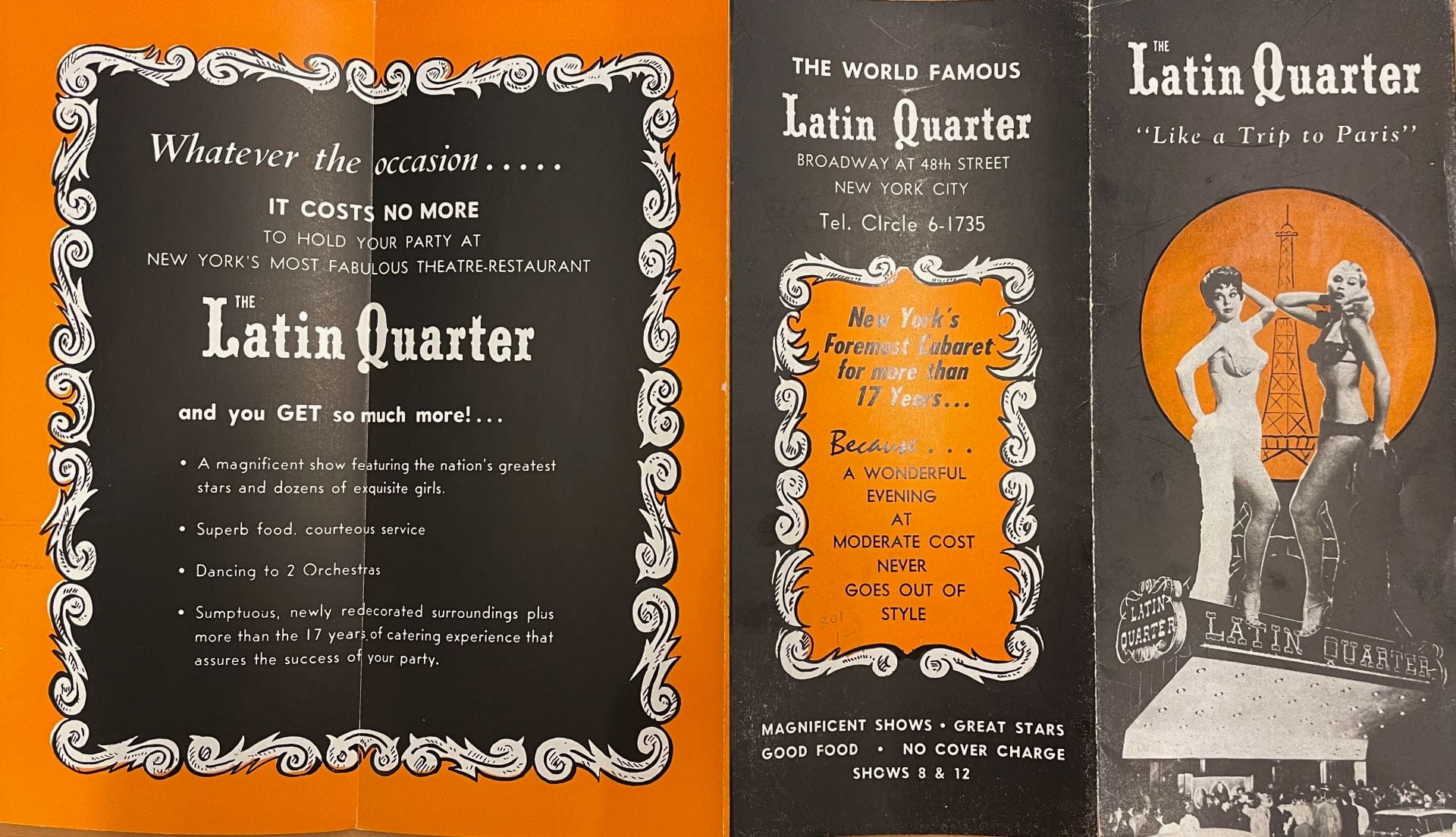The Latin Quarter Nightclub Post Prohibition
Adelyn Carney, Class of 2024, Mathematics and Economics
This blogpost was written as part of the 2022 First-Year Writing Seminar, “The Lure of Leisure: A Global History of Modern Tourism,” taught by History graduate student Aimée Plukker.
Speakeasies appeared in the 1920s after Prohibition was ratified. People looking to drink under the radar would enter these hidden, illegal establishments. Oftentimes speakeasies were in the form of nightclubs with live bands and dance floors. After Prohibition was repealed in 1933, the undercover aspect of the speakeasy was removed and what remained was the nightclub as we know it today – a nighttime venue combining music and dance with alcohol. One of the most successful modern nightclubs that emerged around this time was The Latin Quarter. This NYC nightclub located on Broadway at 48th Street originally opened in the early 1900s under the name Palais Royal, and was renamed Cotton Club in 1936. However, it wasn’t until legendary nightclub entrepreneur Lou Walters, father of television personality Barbara Walters, bought the club in 1942 and rebranded it to The Latin Quarter that it became widely successful.
As described in the brochure, twice-daily shows featuring live music, female dancers, delectable food, and attentive service were used to captivate and entertain audiences during the 1940s, 1950s, and 1960s. The club included a large banquet space that could be used to host private parties, an attractive option for the emerging affluent society. The club was inspired by the Latin Quarter in Paris, a student neighborhood home to several universities with a vibrant culture and nightlife. Jazz and blues were the defining music of the 1940s and this French-style nightclub catered to this with artists such as Frank Sinatra, the Andrews Sisters, and the Carter Family. Similarly, artists such as Patti Page and Johnnie Ray performed at the nightclub in the 1950s when pop and rock began to dominate. Although the club shut down for good in 1989, The Latin Quarter was one of the most influential contributors to 20th-century nightlife.

Source
The Latin Quarter brochure, circa 1942-1958, Box 13, Folder 3, New York Collection: Gregory E. Montes Urban History and Travel Collection, #8035, Division of Rare and Manuscript Collections, Cornell University Library.
Bibliography
Arnold, Thomas K. “History of the Latin Quarter Nightclub in New York City.” USA Today, Gannett Satellite Information Network, 26 Jan. 2018, https://traveltips.usatoday.com/history-latin-quarter-nightclub-new-york-city-20634.html.
“Barbara Walters.” Television Academy Interviews, 18 June 2020, https://interviews.televisionacademy.com/interviews/barbara-walters.
Calta, Louis. “Lou Walters, Nightclub Impresario And Founder of Latin Quarter, Dies.” The New York Times, 16 Aug. 1977, https://www.nytimes.com/1977/08/16/archives/lou-walters-nightclub-impresario-and-founder-of-latin-quarter-dies.html.
Gates, Henry Louis, director. Lou Walters Way. PBS, Public Broadcasting Service, 2012, https://www.pbs.org/weta/finding-your-roots/watch/extras/lou-walters-way. Accessed 10 Apr. 2022.
“Latin Quarter.” IBDB, The Broadway League, https://www.ibdb.com/theatre/latin-quarter-1226.
“Quartier Latin.” En.parisinfo.com, Paris Convention and Visitors Bureau, https://en.parisinfo.com/transport/73228/Quartier-Latin.
“The Speakeasies of the 1920s.” Prohibition, https://prohibition.themobmuseum.org/the-history/the-prohibition-underworld/the-speakeasies-of-the-1920s/.


